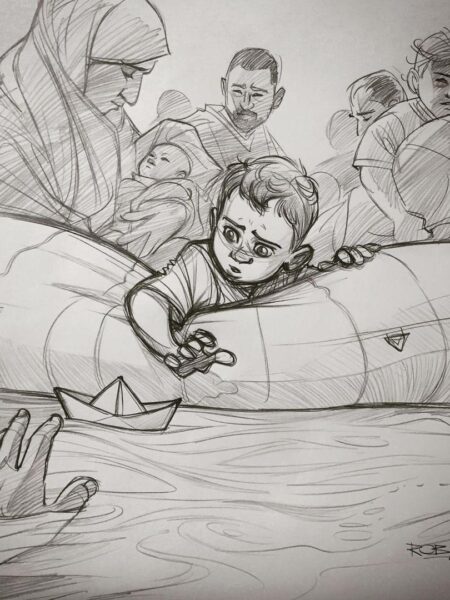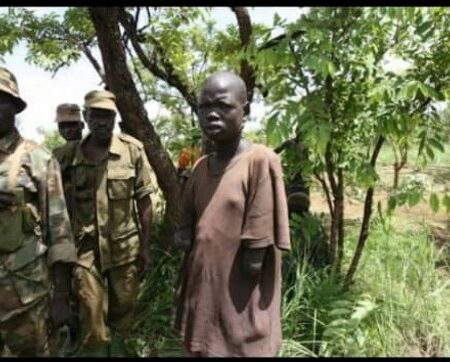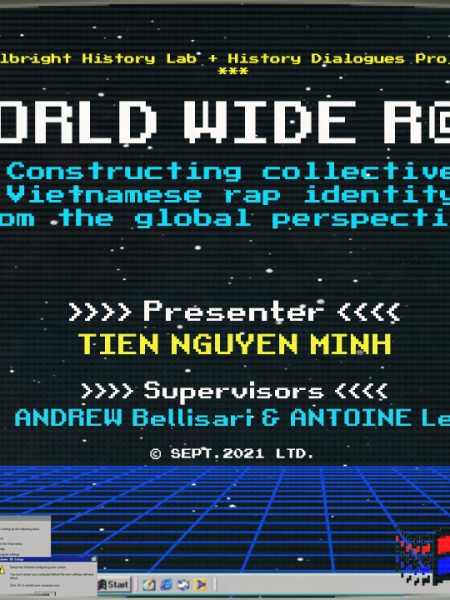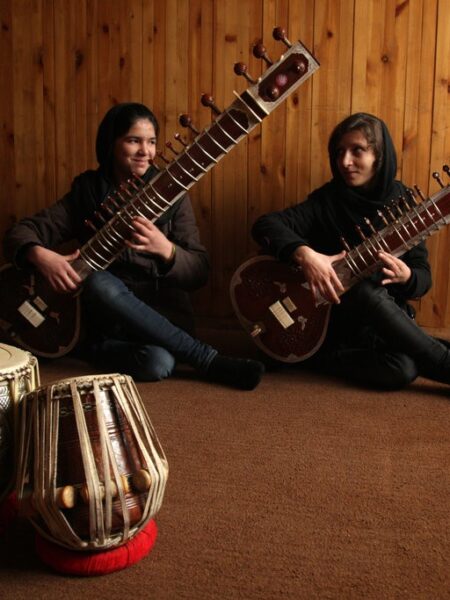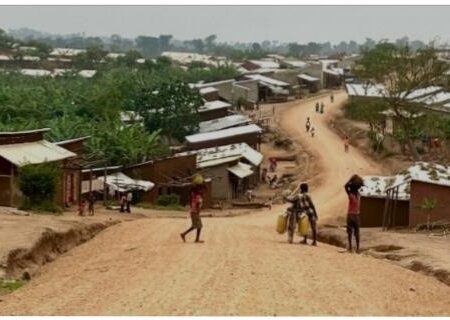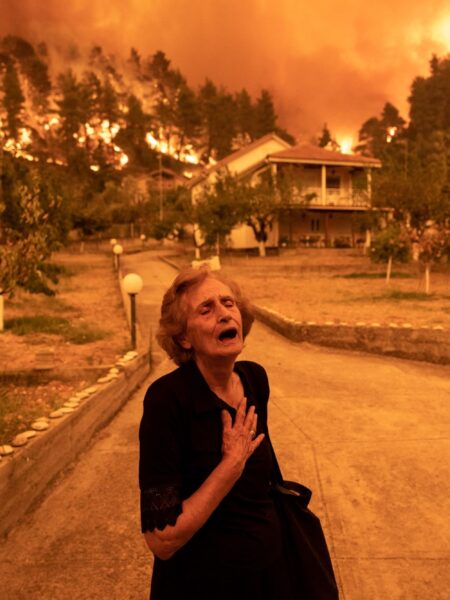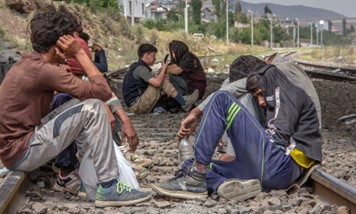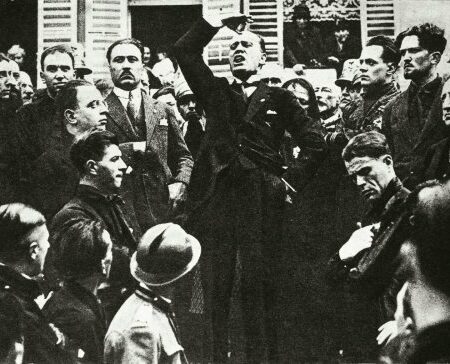Introduction
Since ancient times, human mobility has always been a phenomenon that accompanied the transformation of the human society and its development. Throughout the centuries, people migrated for a variety of reasons: to satisfy their curiosity for what is beyond their tangible borders, to improve their socioeconomic conditions, to escape wars and natural disasters and to build a better future for their children in another country.
While these motivations remained a catalyst for the mobility of people, ideas and goods across time, the perception of and the limits imposed to this natural phenomenon changed over time with the establishment of the nation-state, accompanied by an essentialist idea based on the concept of citizenship and, the consequently, negative connotations attributed to the concept of the other.[1]
The aim of this essay is to analyze how this negative perception of the otherness has influenced the integration of the ‘second generation’ within the Italian society. I will strive to reach an understanding on how education can be used as a vehicle to facilitate the construction of a multicultural and caring society.
Furthermore, I will examine how institutional and mediatic tools can act as an obstacle to the process of a structural integration of the second generation in the public school and, even more so, in public life.
My research is looking on how political dynamics in the Italian context can influence the exclusion and discrimination of second-generation children in the Italian public school system. Furthermore, my research has been inspired by the Pewewardy’s article The Pocahontas Paradox: A Cautionary Tale for Educators, and Leavitt’s work“Frozen in time”: The Impact of Native American Media Representations on Identity and Self‐understanding, which elaborates an analysis on how political dynamics and media invisibility in the American context can foster the process of exclusion and marginalization of indigenous children.
For this purpose, I interview two public school teachers of different grades who help me in understanding the response of the school system towards the second-generation by including the shortcomings of the system and possible strategies of inclusion. Lastly, I interview three second-generation students drawing from their experiences in the Italian public school to grasp how of political and social invisibility effected their educational experience and structural integration.
This research will hopefully provide some relevant insights on how political and mediatic factors can lead or damage the process of inclusion, even in a city as Rome with its mostly cultural vibrating peripheries, namely the periphery of Ostia, where I conducted my research.
Italy’s Second Generation
In the last decades the Italian peninsula has been increasingly affected by a huge influx of migration, also incentivized by its geographical position in the Mediterranean Sea and, its standing as a European country. Furthermore, the economic growth in the 1980s transformed Italy by the 1990s in a host country for immigrants, inevitably changing the demographic, political, economic, and socio-cultural structure of the country [2].
Following a recent census reported by Istat, the Italian national Institute on Statistics, in a report on international migration, in 2020 the migrants regularly accounted on Italian soil are above five billion million, the 8 percent of the Italian population. Of these five billion million, one million and three hundred sixteen thousand made up of the so called second-generation who constitute over the 13% of the population under the age of 18[3].
Compared to other European countries and, especially, to the USA where the children of migrants are a cardinal foundation of the social and economic structure of the country. Italy has been quite slow in integrating this native new generation of children in its political and social discourse, choosing to centre its political and social discourse on undocumented migration by pivoting most of its policies to the regulation of labor migrants for the benefit of the economy.
Referring to America as a core example, the term ‘second generation’ has been associated with the children of migrants, or offspring of a mixed parentage who were born on American land. In a similar way, the Italian second generation encloses the native-born children of foreign or mixed heritage, but also children who arrived in the country before reaching age of consent. This term might be further extended to include migrants naturalized as Italians after obtaining the citizenship. For the purpose this essay, I focus my research on the first two categories.
The Role of Schools: The Voices of the Teachers
School is a child’s most significant learning playground, the place in which children acquire the tools necessary to nurture their mental and emotional capacities to become self-reliant adults. However, this responsibility transforms schools in inherently political spaces where the minds of new generations can be molded to become open and welcome in their regard of otherness, considering their receptiveness during their early stages of the development. Public schools are the most fertile soil for this purpose due to their diversified citizenry.
Most of the children of the second generation attend public schools and, even with the phenomenon of the white flight[4], public school remain a significative space for cross-cultural encounters and intercultural dialogue; hence, public schools become essential for the structural integration of the second generation. This is stated by Mirella Arcamone, a high school teacher.
“The Italian public school system is characterized by an old history of openness, starting in the 70s with the abolition of the differential classes and the beginning of a process of inclusion for what concerns disability and students from disadvantaged socioeconomic background, from those years onwards there was an increasing awareness from the educators based on a praxis of openness that was maintained by the Professors regardless of the political policies. However, we cannot ignore the fact that many children of the second generation decide to attend technical institutions rather than other high schools.”[5]
While public schools are the host for a diversified body of students, the effective integration of the second generation and their opportunities have been challenged by two central sociopolitical and linguistic issues: the lack of a citizenship and the lack of a course of alphabetization.
“The linguistic question is central to close the gap, there is a necessity of teaching the Italian language as a second language in the school to make it a “mother tongue” for these students, so that this constraint will not limit their opportunities. For the citizenship is a grievous issue, it is unthinkable that children born in Italy or children who live in Italy beginning at a certain age cannot have the Italian citizenship. It is also a formal prejudice, and it can be quite confusing for the identity both in psychological and psychosocial terms.”[6]
The linguistic education for children arriving in the host country is essential for an equal and successful school performance, but even more for a social and relational integration within the school system and, especially, to bond and construct relationships with the classmates, as the access to the Italian language can stimulate the inter-cultural dialogue by breaking the prejudices around the children of migrants.
For what concern the issue of the citizenship, the role of the Italian politics in restricting and limiting this right has been quite decisive in influencing the self-identification and some choices of the second generation, as the preference when choosing the high school institute.
Running counter to Italian politics which fuel the stereotypes and the prejudices by nurturing the public opinion with a conservative and selective disinformation, fostering an irrational fear of the other by excluding by the public debate the existence of the second generation, many public schools preserve their policy of openness.
European funds are allocated to sustain the integration, the inclusion, the inter-cultural dialogue for transnational openness, even at a regional level. Therefore, it is important to recognize the implementation of these projects to improve the inclusive climate of the regional territory.
In fact, “Many schools of different grades and institutions request to participate to these associative territorial projects of intercultural dialogue or contamination for the increase of knowledge to break the walls and the stereotypes. There is a great disposition from the schools in taking part to these projects beside territorial associations.”[7]
Furthermore, some Italian public schools also try to stimulate the creation of a more thought-provoking place, in which they can discuss and deconstruct stereotypes and the established values of the mainstream culture.
Teachers in this instance, pave the way for a social and intercultural integration by creating a collaborative environment, where cultural diversity is celebrated as a source of richness and human growth, rather than a source of discrimination. This is recounted by Roberta Cerese, an elementary school teacher who recalled one of these informal culturally responsive experiences during her interview.
“The Christmas tradition, an important moment of the Italian tradition. This festivity has its symbols and icons of religious representation, the difficulty lied in finding some neutral common ground with the other cultures co-existing within the school. So, the choice of favoring the tree over the nativity scene, as the tree is a symbol inherently secular. In the same way, during Ramadan, we can explain to our children why their Muslim classmates eat in a certain way, for how much time it will last and its organization and so on…” [8]
The Voices of the Second Generation: A Lack of Representation
While we can observe and witness a policy of openness cultivated by the public school system, the acceptance of the second generation and their social and cultural inclusion is still undermined by the lack of representation in political, mediatic and social spaces, further complicating the deconstruction of prejudices and stereotypes especially in a monolithic cultural context. Furthermore, the national conservative politics based on an essentialist ideal of citizenship make the membership in the nation an exclusive and selective process.
This absence of a democratic representation fosters a negative perception, and a consequent negative reception, of the second generation, even within the walls of the public school. This is portrayed by the childhood experience of a second-generation student, Martina.
“During the period of the elementary school, I lived a sort of duality because I had a teacher who was racist and I felt deeply the difference between what I was or how others perceived me, and what I wanted to be. The first years I did not have any issues with my classmates but then when they started to notice the different way I was treated compared to them, they started to change their behavior, because of a teacher who externalized quite vocally her negative thoughts on migrants and black people. And when I looked around me, I started to realize that the negative description that she used was really similar to the people who looked like me and like my parents.”[9]
“This changed during the period of middle school when I found myself in a more multicultural context, I did not feel as a foreign anymore”[10]
Self-representation is a crucial part of a child’s psychological and emotional development. For example, when we read a book or watch a movie, we all look for that character who looks, thinks, or behaves like us. We wish for someone in which we can identify, who binds us to the story. We end up creating a bond between us and that fictional character on the screen; we cry, laugh, and grow with them, however, when we are children, this need is even more complicated. Young adults during their development stages are vulnerable at every stimulus they are exposed to. Moreover, they are not just concerned with figuring out what kind of world they live in, but they have also to struggle with the formation of their identity. Hence, if a second-generation child is constantly exposed to a negative portrait of immigrants, their self- esteem can be damaged.
 If we consider Maslow’s hierarchy of needs[11], the development of a child into a happy and self-reliant individual is rooted in the satisfaction of five needs. Physiological needs, safety, belonging and love, esteem needs and self-actualization. Every need must be met to reach the self-actualization which translates into the full potential of the individual. The lack of the development of the psychological needs (belonging and self-esteem spheres) can foster in the child feelings of anxiety, depression, solitude, and a low sense of personal worth.
If we consider Maslow’s hierarchy of needs[11], the development of a child into a happy and self-reliant individual is rooted in the satisfaction of five needs. Physiological needs, safety, belonging and love, esteem needs and self-actualization. Every need must be met to reach the self-actualization which translates into the full potential of the individual. The lack of the development of the psychological needs (belonging and self-esteem spheres) can foster in the child feelings of anxiety, depression, solitude, and a low sense of personal worth.
Additionally, the negative physical and psychological effects of this social artificial representation due to the lack of political and social spaces occupied by second generation of Italians can push second generation children towards an excessive sense of social pressure, as some interviews made to second generation students suggest.
“The classical gymnasium is a little bit of an elitist and closed off environment and because I was a second generation, I felt the necessity to demonstrate that even the children of immigrants can do that kind of school. I remember that when I was in the second-grade people used to ask about the kind of technical institute I wanted to do, and when I answered that I desired to do the humanistic high school, they would start asking if I would be able to follow these expectations.” [12]
“For me attending the classical gymnasyum was also a way to make my parents proud and to make other people recognize and respect them.”[13]
The issue of representation is also reflected in the rigidity of the school curriculum with its ethnocentric and nationalistic narrative. There is not space for the inclusion of different narratives about different cultures and conceptions of history. Most of the second-generation students do not feel represented by their school curriculum, even those who attend public school in a vibrating multicultural context. This rigidity in the school curriculum has been noticed both by students and teachers.
“I remember, when I taught philosophy, I was quite surprised with the idea of not recognizing as philosophy the oriental philosophies. We study philosophy starting from the Greeks onwards, it is a folly because in reality we have other philosophies, even if we have to use other classifications for them such as Buddhism.”[14]
“I was quite moved when on the book of history before the Baltic wars, I found Romania written on the textbook. Even through the school textbook a nationalist culture is perpetrated, there is not a dialogue about the other cultures.”[15]
This issue of representation is also intertwined with politics around the acquisition of the Italian citizenship. The public debate about the release of the Italian citizenship is a central and sensitive topic for most of the second generation but also for the society as a whole, as this second generation of Italians represent an integral part of the social, political and economic fabric of the society as a possible source of enrichment to reinvigorate and reform the country.
Why is it so central to obtain a citizenship?
The citizenship embodies the status and the rights and duties of a citizen, marking his identity and his membership to the nation-state. This membership ticket also draws a line of separation between “us” namely the recognized members of the nation, and “them” the ones, in this instance, that were not guaranteed the privilege of this status. Even if the second generation share several traits of the national identity as the language and the culture, their physical characteristics and religious beliefs can be a cause of demarcation from the rest of the citizens.[16]
Consequently, having a citizenship for the second generation is important to close the social gap and to have access to a diversified body of opportunities that in the absence of this citizenship are precluded, furthermore if we want to consider Maslow’s hierarchy of needs the citizenship could represent a mean to fulfill a need of belonging to a group. This is stated by the student Andra Duta.
“The citizenship is important to fulfill and satisfy a sense of belonging to a certain group of people, however from an institutional standpoint the citizenship, at some point, lost its centrality for me. I always considered myself as an Italian citizen and that was enough for me, however I recognize the problematics related to this issue for example when is the time to vote.”[17]
Despite the variety of proposals such as the Ius Sanguinis[18], Ius Solis[19] and Ius Culturae[20], the citizenship laws have still a long way to go to build a multicultural and inclusive environment for all the citizens of the nation. Especially, when considering the selectiveness of this process both in terms of bureaucracy and economic status.
Strategies to improve the School System and the Integration of the Second Generation
Teachers are central for leading a positive change if we account the hours that they spend with the students and on their influence on young minds during their educational journey.
Consequently, they would strive to create a more thought-provoking environment, to make possible the discussion and deconstruction of stereotypes together with the established values of the mainstream culture. In this collaborative environment, cultural diversity is celebrated as a source of richness and human growth, rather than a source of discrimination. The school’s curriculum must be rewritten to shed light on the history of different cultures. A project that requires the direct involvement of the migrant communities to ensure a more realistic representation.
If we want to construct an equal and fair society, we need “culturally responsive teachers” who are sensible and embrace the cultural differences of their second-generation students.
“Today’s foremost challenge in education is to create a learning environment that maintains the cultural integrity of every child while enhancing their educational success.”[21].
A possible structured training program[22] will allow teachers with the suitable knowledge, skills, and attitudes to have a more critical outlook on the treatment and struggles of the second generation as they will be capable to develop strategies to extract the seeds of racism and marginalization, creating for all the children in the classroom an inclusive and representative habitat.
In conclusion, while this optimistic view of a culturally responsive education can seem impossible if we think about the rigidity of the school curriculum, as my local case study suggests, the attempt to create a culturally responsive education is already informally present in the public school through the participation of schools in projects aimed to improve the intercultural dialogue and to nurture the empathy and understanding towards different cultural practices, especially in contexts as the public schools where we need strategies to tackle the cultural diversity of the students.
The role of teachers in supporting the emotional and psychological development of the second-generation students is central to heal the negative effects of the mediatic and political invisibility. In this instance, they can work on the school curriculum or on initiating debate on mainstream values.
Another central point is to increase the cultural diversity in the classes. As my interviewees mentioned, the peripheries of Rome are not exempted from discrimination even with their mixed cultural contexts. In fact, this bias also includes public schools where we can register a low presence of the second-generation in some classes. Especially, the most prestigious public high schools remain an exclusivist and selective environment where even the low presence of the second generation is challenged by biases and assumptions on their capacity to conform to the academic standards. Even so, public schools, as my case study suggests, continue to occupy a central role for the construction of an equal, inclusive, and multicultural society where teachers have the possibility to directly address the issues rooted in the absence of a democratic representation of the second-generation, regardless of existing national politics.
[1] Isayev, Elena (2021).Ancient Wandering and Permanent Temporariness. (Links to an external site.) In E. Isayev and E. Jewell (eds.), Displacement and the Humanities. (Special Issue of Humanities 10: 91) (2021)
[2] Source: Italy – Immigration and foreign policy | Britannica
[3] Source: Seconde generazioni in Italia e percorsi di integrazione – Fondazione ISMU
[4] The White flight is a phenomenon that see the gradual or large-scale migration of white people moving out from areas becoming culturally and racially diverse. This phenomenon can give birth to segregated schools. Source: Cordini, Marta, Andrea Parma, and Costanzo Ranci. “‘White flight’in Milan: School segregation as a result of home-to-school mobility.” Urban Studies 56, no. 15 (2019): 3216-3233
[5] Roberta Cerese, interview by author, Rome, May 26, 2022
[6] Mirella Arcamone, interview by author, Rome,June 10,2022
[7] Mirella Arcamone,interview by author, Rome, June 10,2022
[8] Roberta Cerese, interview by author, Rome,May 26,2022
[9] Martina Fernando, interview by author, Rome, June 12,2022
[10] Martina Fernando,interview by author, Rome, June 12, 2022
[11] McLeod, Saul. “Maslow’s hierarchy of needs.” Simply psychology 1, no. 1-18 (2007).
[12] Martina Fernando, interview by author, Rome, June 12, 2022
[13] Martina Fernando, interview by author, Rome, June 12,2022
[14] Mirella Arcamone, interview by author, Rome, June 10,2022
[15] Andra Duta, interview by author, Rome, May 6, 2022
[16] Source: Tintori, Guido. “Ius soli the Italian way. The long and winding road to reform the citizenship law.” Contemporary Italian Politics 10, no. 4 (2018): 434-450.
[17] Andra Duta, interview by author, Rome, May 6, 2022
[18] Ius sanguinis is a rule that a child’s citizenship is determine by its parents citizenship. Merriam Webster, Jus Sanguinis, source: Jus sanguinis Definition & Meaning – Merriam-Webster
[19] Ius solis is a rule that a child’s citizenship is determined by the place of its birth. Merriam Webster, Jus Solis, source: Jus solis Definition & Meaning – Merriam-Webster
[20] Ius culturae is a rule that a migrant child who came in italy before the age of 12, will obtain the citizenship by attending italian schools for at least a ciycle of study.
[21] Source: Tintori, Guido. “Ius soli the Italian way. The long and winding road to reform the citizenship law.” Contemporary Italian Politics 10, no. 4 (2018): 434-450.
[22] Pewewardy, Cornel. “The Pocahontas paradox: A cautionary tale for educators.” Journal of Navajo Education 14, no. 1-2 (1996): 20-25.
Bibliography
Britannica: Italy – Immigration and foreign policy | Britannica
Cordini, Marta, Andrea Parma, and Costanzo Ranci. “‘White flight’in Milan: School segregation as a result of home-to-school mobility.” Urban Studies 56, no. 15 (2019): 3216-3233
Isayev, Elena (2021).Ancient Wandering and Permanent Temporariness. (Links to an external site.) In E. Isayev and E. Jewell (eds.), Displacement and the Humanities. (Special Issue of Humanities 10: 91) (2021)
Leavitt, Peter A., Rebecca Covarrubias, Yvonne A. Perez, and Stephanie A. Fryberg. ““Frozen in time”: The impact of Native American media representations on identity and self‐understanding.” Journal of Social Issues 71, no. 1 (2015): 39-53.
Pewewardy, Cornel. “The Pocahontas paradox: A cautionary tale for educators.” Journal of Navajo Education 14, no. 1-2 (1996): 20-25.
Phuntsog, Nawang. “The magic of culturally responsive pedagogy: In search of the genie’s lamp in multicultural education.” Teacher Education Quarterly (1999): 97-111.
Seconde generazioni in Italia e percorsi di integrazione – Fondazione ISMU
Tintori, Guido. “Ius soli the Italian way. The long and winding road to reform the citizenship law.” Contemporary Italian Politics 10, no. 4 (2018): 434-450.
Wake, Paul, and Simon Malpas, eds. The Routledge companion to critical and cultural theory. Routledge, 2013.
Zinn, Dorothy Louise. “‘Loud and clear’: the G2 Second Generations network in Italy.” Journal of Modern Italian Studies 16, no. 3 (2011): 373-385.

